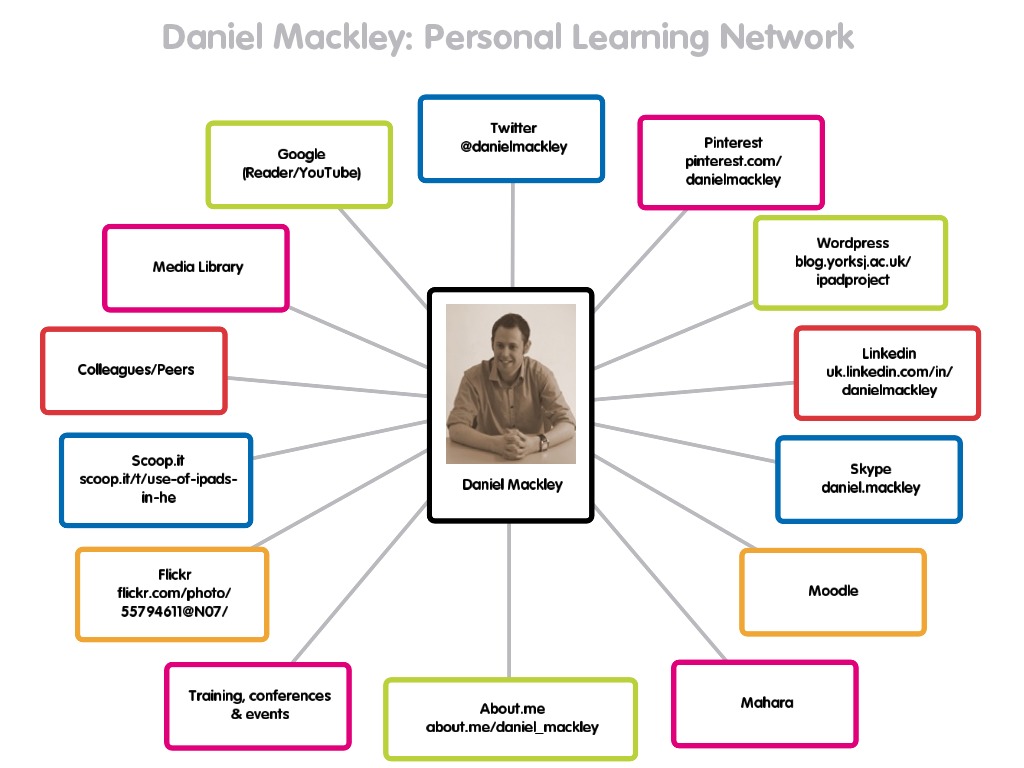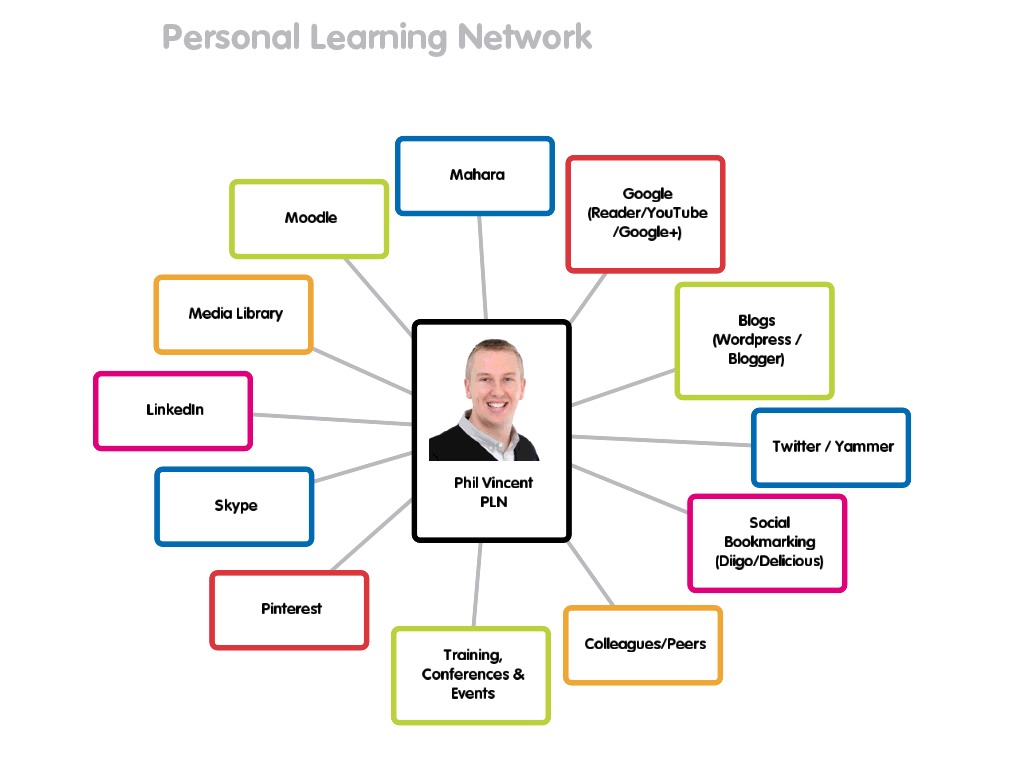 In preparation for Learning at Work Week (19th-25th May), and the TEL team sharing a series of blog posts on our favourite technology for engaging with our Personal Learning Network, so we thought it would be a good idea to explain what a Personal Learning Network and Environment is…
In preparation for Learning at Work Week (19th-25th May), and the TEL team sharing a series of blog posts on our favourite technology for engaging with our Personal Learning Network, so we thought it would be a good idea to explain what a Personal Learning Network and Environment is…
Personal learning environments (PLEs) are environments where the learner can access and share a range of tools and services in an integrated way for supporting their own needs. These environments have evolved from the VLE and MLE developments of the past as well as building upon new tools e.g. social software. Together they offer greater opportunities for personalisation. PLEs may include: social software, integrated tools and user modelled services. The learning theories used to support PLEs tend to be a blend of associative, cognitive and situative learning theories.
Personal Learning Networks (PLNs) are deliberately formed networks of people and resources capable of guiding our independent learning goals and professional development needs. A module cohort could be considered an example of a personal learning network in which we participate, our peers and tutors are a source of information and knowledge, and a community to which we can take our ideas and questions.
A personal learning network is an informal learning network that consists of the people a learner interacts with and derives knowledge from in a personal learning environment (Utecht, 2008). In a PLN, a person makes a connection with another person with the specific intent that some type of learning will occur because of that connection.
In our role as a Technology Enhanced Learning Advisors, we try and encourage the development of such networks, and encourage staff to realise and consider their own PLE/PLN. We also support a scheme to reward and recognise the work of individual staff members for their contribution to the enhancement of teaching and/or supporting student learning using technology and to their contribution to meeting the learning and teaching goals of the faculty/subject and University. Our e-Pedagogy Teaching Fellows play a central role in their faculty/subject in on-going technology enhanced learning and teaching innovation work and the development of the TEL Quality Framework.
An important part of this concept is the theory of connectivism, as identified by Downes (2007), learners create connections and develop a network that contributes to their professional development and knowledge. The learner does not have to know these people personally or ever meet them in person.
With the easy availability of online tools, people are now doing their own thing. This is not just the case for those who are designing and/or delivering training or education for formal learners, but also by many to address their own learning and performance needs. There is a huge amount of evidence that shows that individuals (and teams) are using these tools for their own personal, informal learning.
Instead of going to the VLE, or Intranet, to find answers to their questions or solve problems, they are using tools like Google, Wikipedia or YouTube, or simply posting questions to their networks on Twitter or Facebook in order to get immediate, up-to-date and relevant answers.
Take a look at our Personal Learning Networks and compare it to your own:

 In the comments box below, please share with us how you engage with your Personal Learning Network and the tools and technologies you use to facilitate this?
In the comments box below, please share with us how you engage with your Personal Learning Network and the tools and technologies you use to facilitate this?
Daniel
Useful Links
- Edublogs – Creating a Personal Learning Network
- Edudemic – Why (And How) You Should Create A Personal Learning Network
- Personal Learning Networks for Educators: 10 Tips
References
DOWNES, S. (2007). Learning networks in practice. In: LEY, D. (ed.). Emerging technologies for learning. NRC.
UTECHT, J (2008). How to create a personal learning network. Tech & learning, 28 (10), 52.

0 responses on "What is a Personal Learning Network/Environment?"